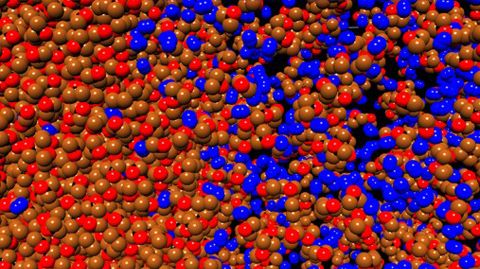Principal Investigator:
Fabien Alet (1) and David J. Luitz (2)
, (1) Centre national de la recherche scientifique (CNRS), Toulouse University, France, (2) Max Planck Institute for the Physics of Complex Systems (MPIPKS), Dresden, Germany
HPC Platform used:
Hazel Hen of HLRS
Local Project ID:
PP16153659
How fast can information travel in a quantum system? While special relativity yields the speed of light as a strict upper limit, many quantum systems at low energies are in fact described by nonrelativistic quantum theory, which does not contain any fundamental speed limit. Interestingly enough, there is an emergent speed limit in quantum systems with short ranged interactions which is far slower than the speed of light. Fundamental interactions between particles are, however, often of long range, such as dipolar interactions or Coulomb interactions. A very-large scale computational study performed on Hazel Hen revealed that there is no instantaneous information propagation even in the presence of extremely long ranged interactions and that…






























